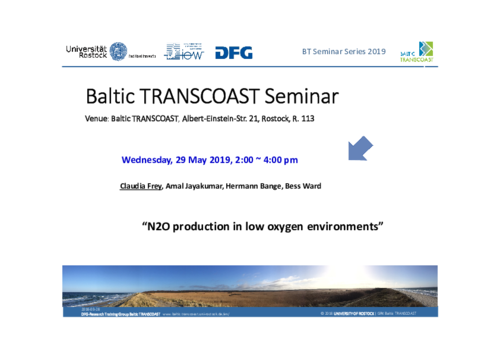Authors: Claudia Frey1,2,a, Amal Jayakumar1, Hermann Bange2, Bess Ward1
1 Department of Geosciences, Guyot Hall, Princeton University, Princeton, NJ 08544, USA
2 Helmholtz Center for Ocean Research Kiel, Düsternbrooker Weg 20, 24105 Kiel, Germany
a now at: University of Basel, Aquatic and Stable Isotope Biogeochemistry, Department of Environmental Sciences, Bernoullistr. 30, CH-4056 Basel, Switzerland
Abstract:
Nitrous oxide (N2O) is a powerful greenhouse gas and ozone depleting substance, but its natural sources and variability remain poorly constrained. Marine hot spots for N2O emissions are coastal oxygen minimum zones (OMZs) with high net N2O production. In order to understand what controls net N2O fluxes, and whether the magnitude of N2O production might change in response to global climate and environmental change, it is necessary to determine the factors that influence the major microbial pathways (nitrification and denitrification). The potential niche overlap of nitrifiers and denitrifiers in OMZs makes it difficult to distinguish between these two N2O sources. In this presentation, I will talk about recent progress of our understanding on the microbial physiology and regulation of N2O production from nitrification and the importance to consider denitrification as N2O source and not just as N2O sink.

